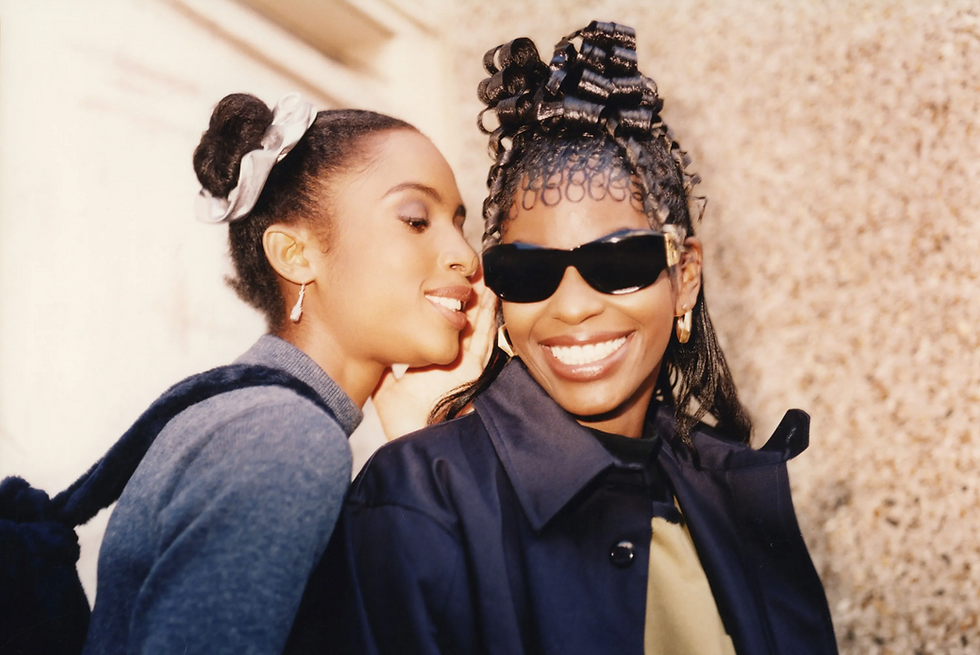Cato Ink’s solo exhibition is a love letter to South London stories
- Yellowzine

- 3 days ago
- 3 min read
Updated: 1 day ago
Most art openings in London have a certain vibe: low-fi music (if any), muted mumbles, nods of approval, and an air of demureness. So, on a rainy weekday, heading to the opening night of Cato Ink's exhibition, the last thing I expected was a room buzzing with conversation and laughter, with barely any space for the solitary nodding I’ve become accustomed to practising at events like these. Fittingly, Cato’s opening night was a microcosm of London’s community, loud - topped off with a quick performance by tuba player and composer Theon Cross. So London.

Cato Ink is a London-based multidisciplinary artist that creates work about the places and faces in his local community. He invites people from his community into his studio to sit for him and to be photographed. He uses streetcasters in Peckham to scout people to photograph which serve as the foundation of his paintings. His work, now showing at Saatchi Yates, invites you to experience life as he sees it, capturing everyday scenes from barbershop conversations and hair shop rituals, to food with family and intimate moments of stillness. The result is art rooted deeply in community storytelling. I’ve come across Cato’s work many times, and have been an attentive social media follower for a few years now. However, his solo exhibition at Saatchi Yates was my first time seeing his pieces in person and that experience reawakened my love for his artistry. His large-scale paintings combine collaging, painting and airbrushing in a way that blurs the lines between realism and abstraction. Many of his creations are inspired by anecdotes from people in the artist’s real life. “It’s about people, it’s about what’s going on in their heads”, he says in a recent Dazed interview. Cato visualises stories from his family and friends as well as strangers he meets along the way.

Though his influences are clear, his work remains original, and he doesn’t shy away from crediting those who came before him. Citing art legends such as Kerry James Marshall and Romare Bearden, Cato’s work becomes an amalgamation of techniques that results in a distinctive style - one that inspires viewers like me to experiment more. And it's no mistake, “I paint what I want to see. I make these worlds for myself to live in. I’m trying to talk to my heroes... I want to be someone who kids like me can look up to. I hope some kid looks at my work and can’t sleep because he’s dreaming.” Me being the kid in this instance.
The movement in his work is inspired by a love for filmmaking and animation. Though not often behind the camera himself, Cato looks to cut-out animators, noting the ways they bring still objects to life through positioning. He achieves a similar dynamism through collaging; for Cato, it’s a way to learn about movement through painting. It introduces the ability to “animate” the characters by moving them around, allowing them to settle into a still rather than a fully predetermined composition.
Cato's exhibition brings the many characters in our communities to the forefront. Though his style is not solely rooted in realism, the stories he tells are. From his “uncle” figures sharing moments of joy to solitary experiences of music, Cato’s art is a love letter to the rituals and stories that exist within intimate spaces across the Black community.
Words by Aisha Ayoade









Comments